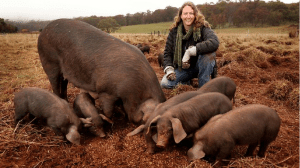The real costs of ‘cheap’ food
Nick Rose
This article first appeared in the Coffs Coast Advocate, 19.2.11
There’s been plenty of talk over the past month or so about the impact that the extreme weather events north of the border will have on food and grocery prices, vegetables and bananas especially.
There’s lots of things to say about this, beginning with the fact that if the mid-north coast still had a viable banana industry, and if production wasn’t so centralised and concentrated in cyclone-prone areas of north Queensland, then consumers might not be so vulnerable to the sorts of price spikes we’re likely to see in the coming months.
Be that as it may, there’s a bigger question at stake which is rarely addressed, and that’s whether the ‘normal’ price we pay for our groceries is sufficient to maintain a healthy, diverse and viable agricultural sector in this country over the medium and long-term, given the way that current market mechanisms operate.
It’s hardly any secret that many farmers are doing it tough, and have done so for a long time. So it should come as no surprise that Australia has lost around 50,000 farmers since the mid-1960s, and the exodus continues, with five farmers leaving the land every day.

Nor should it be any surprise that the average age of the Australian farmer is approaching 60. There simply aren’t the incentives for young people to want to embrace agriculture as a career and lifestyle choice. Which begs the question: who’s going to do the work of feeding us in 15 or 20 years’ time, when most farmers will be approaching 80, and there’ll be 35,000 fewer of them?
Does this sound like a crisis-in-the-making to you? It certainly does to me. In fact, it’s a crisis that’s been with us for many years now.
Which brings us back to the central issue: the proper cost of food. Through the centuries, farmers have always sought a fair price – a just price – for their produce. The trouble in recent decades is that they simply have not been getting it. At the heart of the global crisis in agriculture – Australia is but one of dozens of countries affected – is that farm-gate prices have failed to keep pace with the rising costs of inputs, freight and labour. In many cases farm-gate prices have barely risen at all.
Alongside this cost-price squeeze, we have seen an equally strong trend towards the concentration of ownership and control of most aspects of the food-value chain: from seed, to agro-chemicals, to grain trading and meat-packing, to food processing and manufacturing, and to retailing. We have witnessed the corporatisation and monopolisation of food and agriculture.
Many would say that the two trends – the farm crisis, and the growth of agri-food monopolies – are closely linked. So closely, that the latter brings about the former.
There’s no simple answer to this, and I’m certainly not advocating a big price hike in groceries for consumers, least of all the many millions of middle and low-income Australians who are experiencing cost-of-living pressures already, with electricity and petrol price rises, not to mention the constantly rising cost of housing. But the question remains: how do we make farming viable – especially for smaller scale, bio-diverse farms – and yet keep food affordable?
We do need to move away from the culture of cheap food, where price is the sole criterion for making purchasing decisions. The logic of the food system as it stands points in one direction: the factory farm. And if you want to know why that’s a future we ought to say no to, come and watch Food Inc: see the interviews with factory farmers and workers in the United States; the conditions in which the animals are kept; the phenomenal waste that is generated, and the severe consequences for human and environmental health. The good news is that there are alternatives, and they’re being implemented all over the world, including on the Coffs Coast.





























